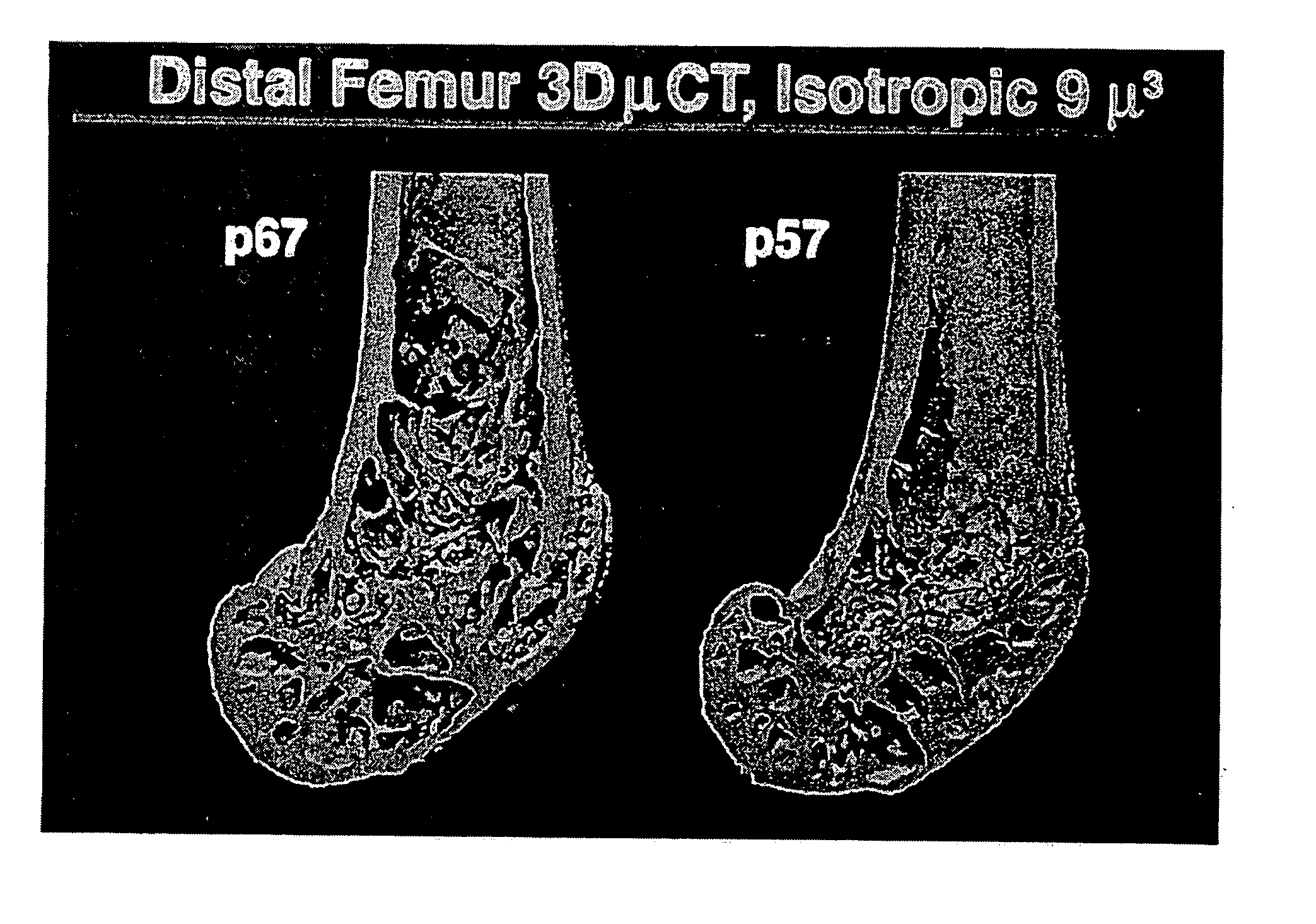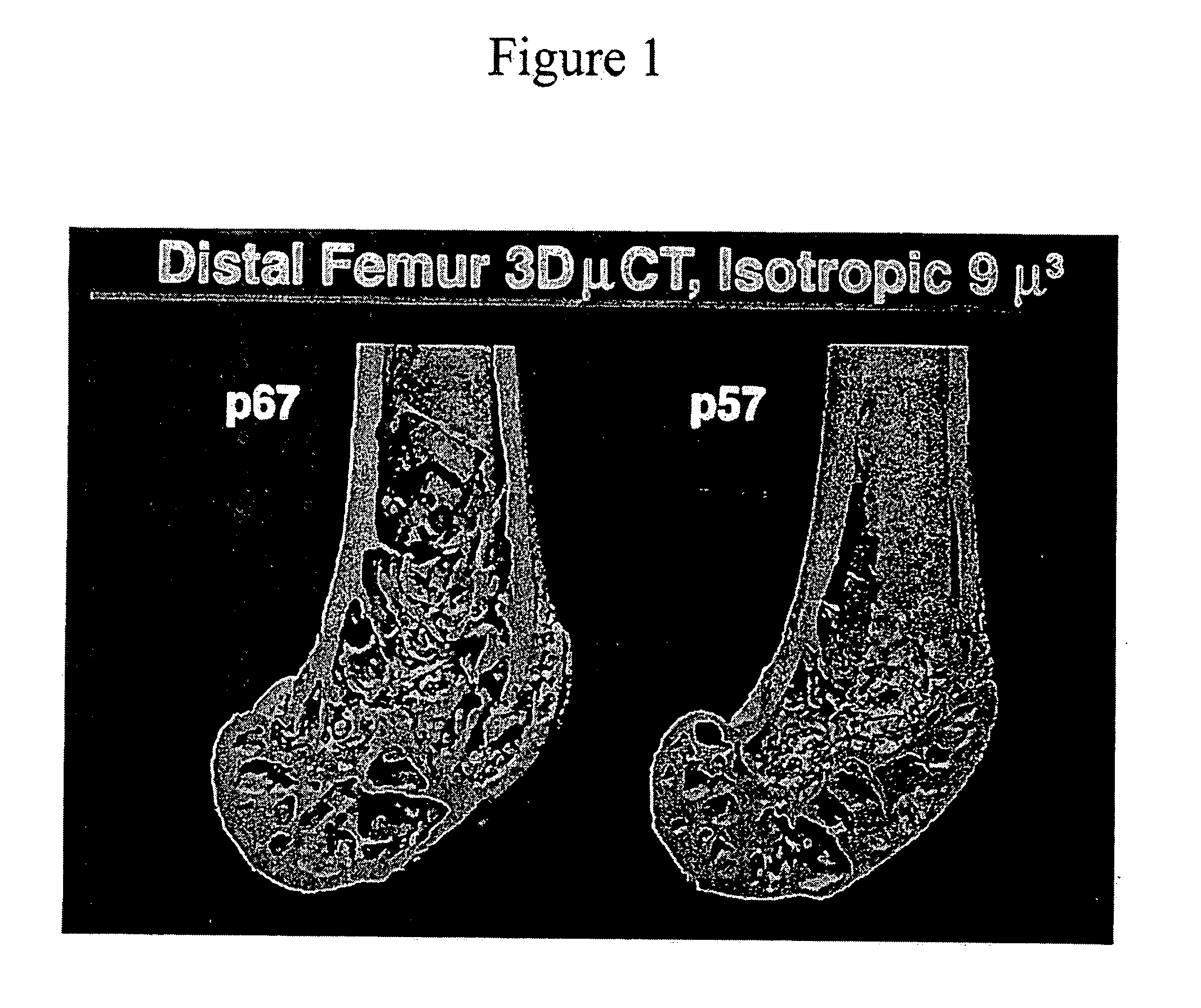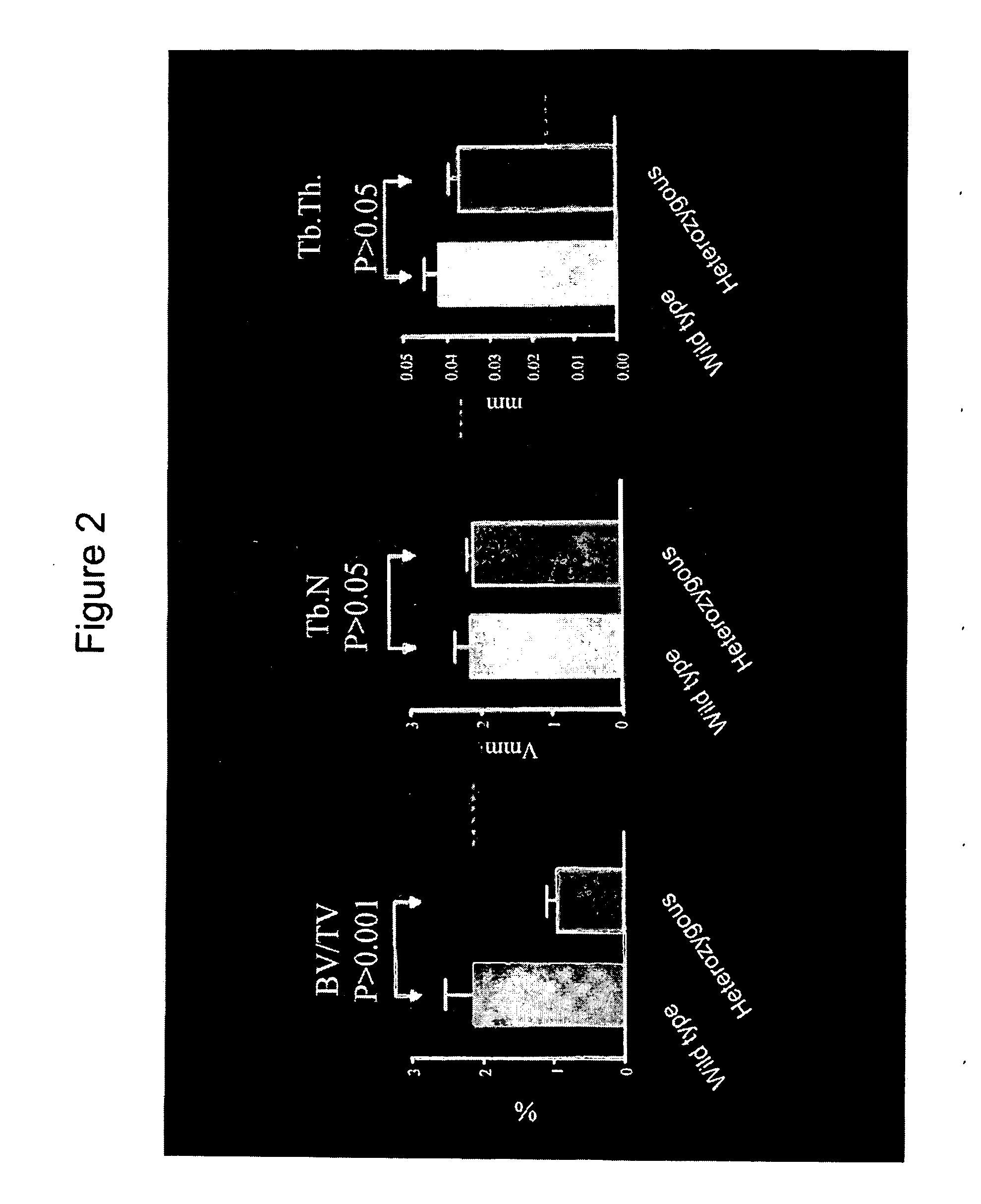Pthrp-based prediction and diagnosis of bone disease
a bone disease and pthrp technology, applied in the field of bone disease prediction, diagnosis and treatment, can solve the problems of loss of independence, pain, death, and increase the cost of acute and long-term care, and overcome any effort to contain health care costs, so as to eliminate or reduce the manifestation of bone disease
- Summary
- Abstract
- Description
- Claims
- Application Information
AI Technical Summary
Benefits of technology
Problems solved by technology
Method used
Image
Examples
example 1
Analysis of PTHrP (+ / −) Heterozygous Mice
[0148] To assess the degree of bone loss in the PTHrP (+ / −) animals, bones were removed from these animals and analyzed using microCT. The bones were scanned on a μCT 20 system (Scanco USA, Inc. Wayne, Pa.) at a resolution of 18 μm3. A set of images was obtained from each sample. Three-dimensional analysis was conducted on 10 manually selected volume of interest to calculate trabecular bone morphometric parameters. FIG. 1 is a representative picture from the normal (left specimen) and heterozygous mice (right specimen) showing again the diminished content of trabecular bone in the mutant animals.
[0149]FIG. 2 shows the measured bone volume (BV / TV), analysed as described above, which is decreased by more than 50% in the mutant animals while the number (Tb.N) and thickness (Tb.Th.) of bone trabecules was not altered.
[0150] As shown in FIG. 3, the spacing between trabecules was significantly increased, while other parameters such as DA (degree...
example 2
Selective Inactivation of PTHrP in Osteoblasts in Mice
[0153] In the heterozygous PTHrP (+ / −) mice, the PTHrP gene is removed from every cell in the body, including osteoblasts and chondrocytes, the cartilage-forming cells. Since bone is derived from cartilage, it is possible that the observations were a reflection of improper cartilage formation per se rather than impaired bone formation. These observations point to a potential mechanism with the same end result, i.e. impaired bone formation in PTHrP heterozygotes.
[0154] To rule out this possibility, mice were generated (shown schematically in FIG. 6) missing PTHrP only from osteoblasts using the Cre-LoxP system for which two mice are needed: one contains the PTHrP gene flanked by LoxP sequences and the second, is a transgenic mouse expressing Cre recombinase under an osteoblast-specific promoter (type 1 collagen) (He et al. (2001) Endocrinology 142(5):2070-7). When mated, the PTHrP gene is removed only from osteoblasts. All other...
example 3
Comparison of PTHrP Genetic Sequences Between Osteoporotic and Healthy Subjects
[0161] The human PTHrP gene structure is depicted among others in FIG. 9, and is further disclosed by Yasuda T. et al. in J Biol Chem. 1989 May 5; 264(13):7720-5). The arrow points to the region of DNA that encompasses a VNTR, a Variable Number of Tandem Repeats, that has been previously described but no functionality was ascribed to it (Pausova Z. et al. Genomics. 1993 17(1):243-4).
[0162] As illustrated in FIG. 10, the VNTR-containing sequence can be amplified from genomic DNA using PCR with the oligonucleotide primers for the regions underlined. The number of tandem repeats (G / ATATATATA)n gives rise to various lengths of amplified DNA depending on the number (n) of these repeats contained in an individual's DNA.
[0163] As shown in FIG. 11, the prevalence of the various VNTRs in the general population, ranges from 252 base pairs (bp) to 460 bp in length. Clearly, the 252 bp and the 378 bp VNTRs are the...
PUM
| Property | Measurement | Unit |
|---|---|---|
| length | aaaaa | aaaaa |
| bone density | aaaaa | aaaaa |
| trabecular bone volume | aaaaa | aaaaa |
Abstract
Description
Claims
Application Information
 Login to View More
Login to View More - R&D
- Intellectual Property
- Life Sciences
- Materials
- Tech Scout
- Unparalleled Data Quality
- Higher Quality Content
- 60% Fewer Hallucinations
Browse by: Latest US Patents, China's latest patents, Technical Efficacy Thesaurus, Application Domain, Technology Topic, Popular Technical Reports.
© 2025 PatSnap. All rights reserved.Legal|Privacy policy|Modern Slavery Act Transparency Statement|Sitemap|About US| Contact US: help@patsnap.com



